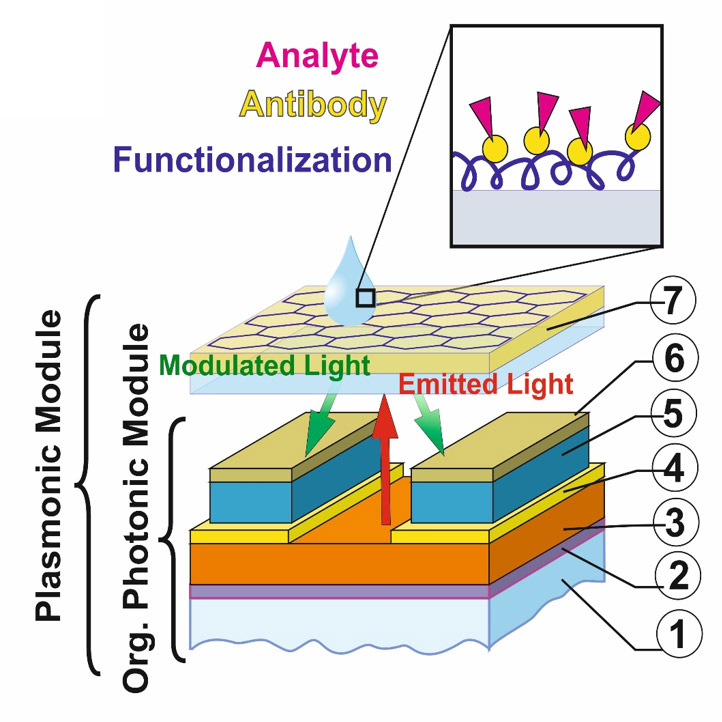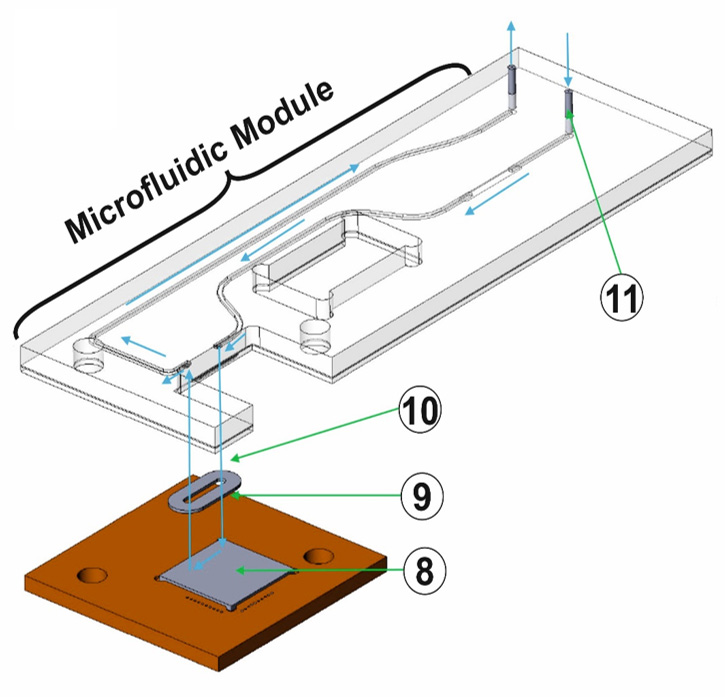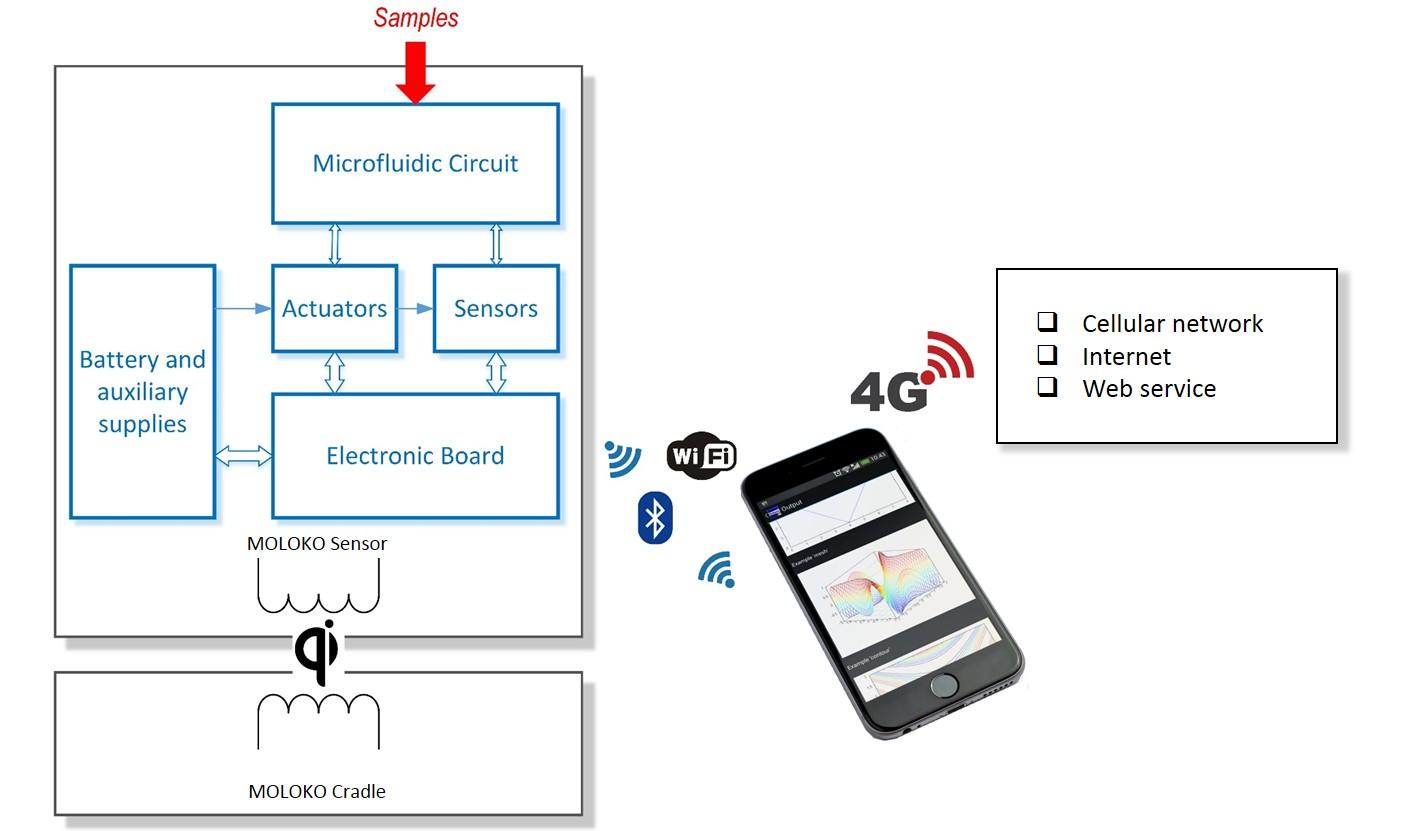MOLOKO optical biosensor will present maximized characteristics in detection by the exploitation of inherent features of the organic optoelectronic, plasmonic and immunoassay components comprising the overall system.
This ambition will be supported by implementing a synergetic approach in integrating 4 technology-enabling building blocks which allows for the realization of high-added value biosensor:
– An organic light source as organic light-emitting transistor (OLET) enables an optics-less lightcoupling in a high-sensitive detection scheme
– A non-conventional nanostructured plasmonic surfaces which allow to detect refractive index modulation at the grating surface opposite to where the probing excitation light is impinging
– An organic photodetector (OPD) that is monolithically integrated in the OLET structure by multistack side-by-side fabrication in order to enhance sensor miniaturization
– Recombinant antibody technology to be used to improve the sensitivity of detection by utilizing oriented and site-specific immobilization of antibodies and to increase the specificity of the assay and reduce the inhibiting matrix effects with respect to the conventional competitive assay format.
Below, we report a sketch of the sensor functioning. The key photonic component at the basis of the architecture of MOLOKO biosensor is the OLET that enables the control of the spatial position of the light emission zone within the micrometer-long transistor channel by acting on the gate voltage7. We fully exploit all the photonic features intrinsic to OLETs by monolithically integrating organic multistack OPDs onto the charge-injecting electrodes in OLET. The OPDs are deposited as stripes on top of the electrode surface of OLET by mechanical micrometric alignment: the OPDs work as integrated detectors in the organic photonic module.
Finally, the module is assembled with the functionalized plasmonic grating (optoplasmonic module) that reflects back the impinging OLET electroluminescence, once modulated in peak emission wavelength and spectrum broadness, into the OPD for signal detection. Thus, the optical detection scheme is oversimplified given that light-emitting and sensing components are highly integrated (no bulky detectors allowed) and no optical components are used for coupling modulated light.





